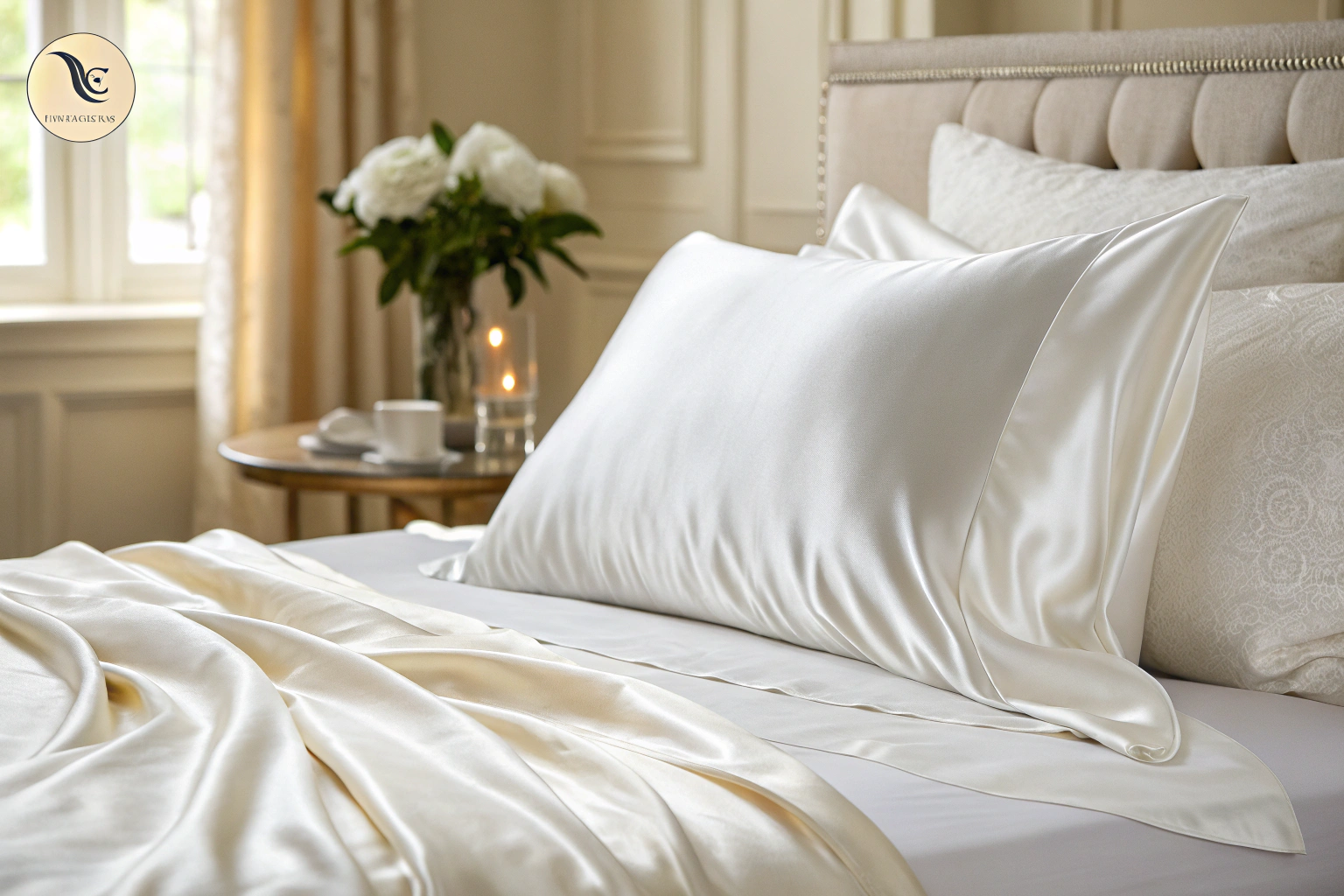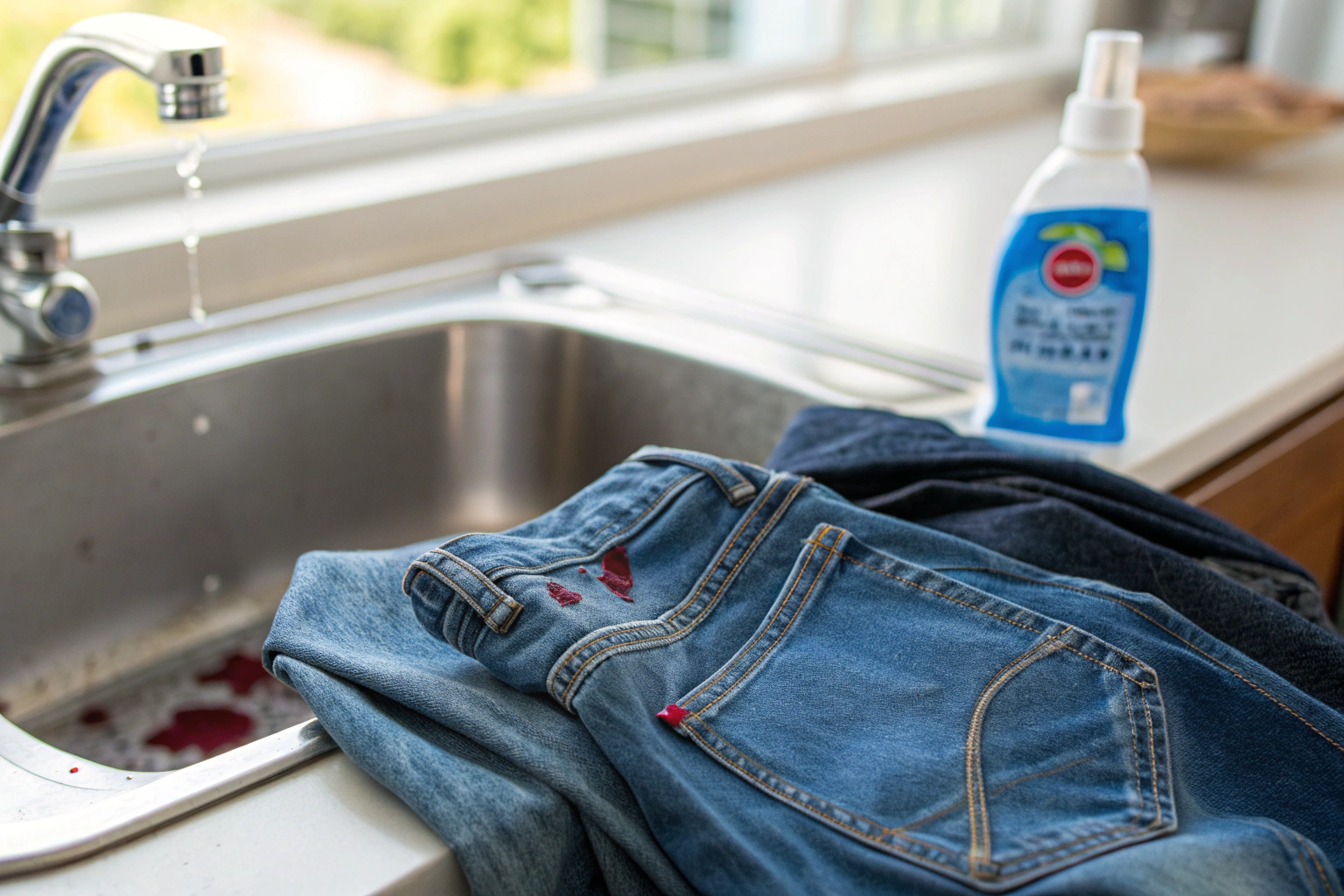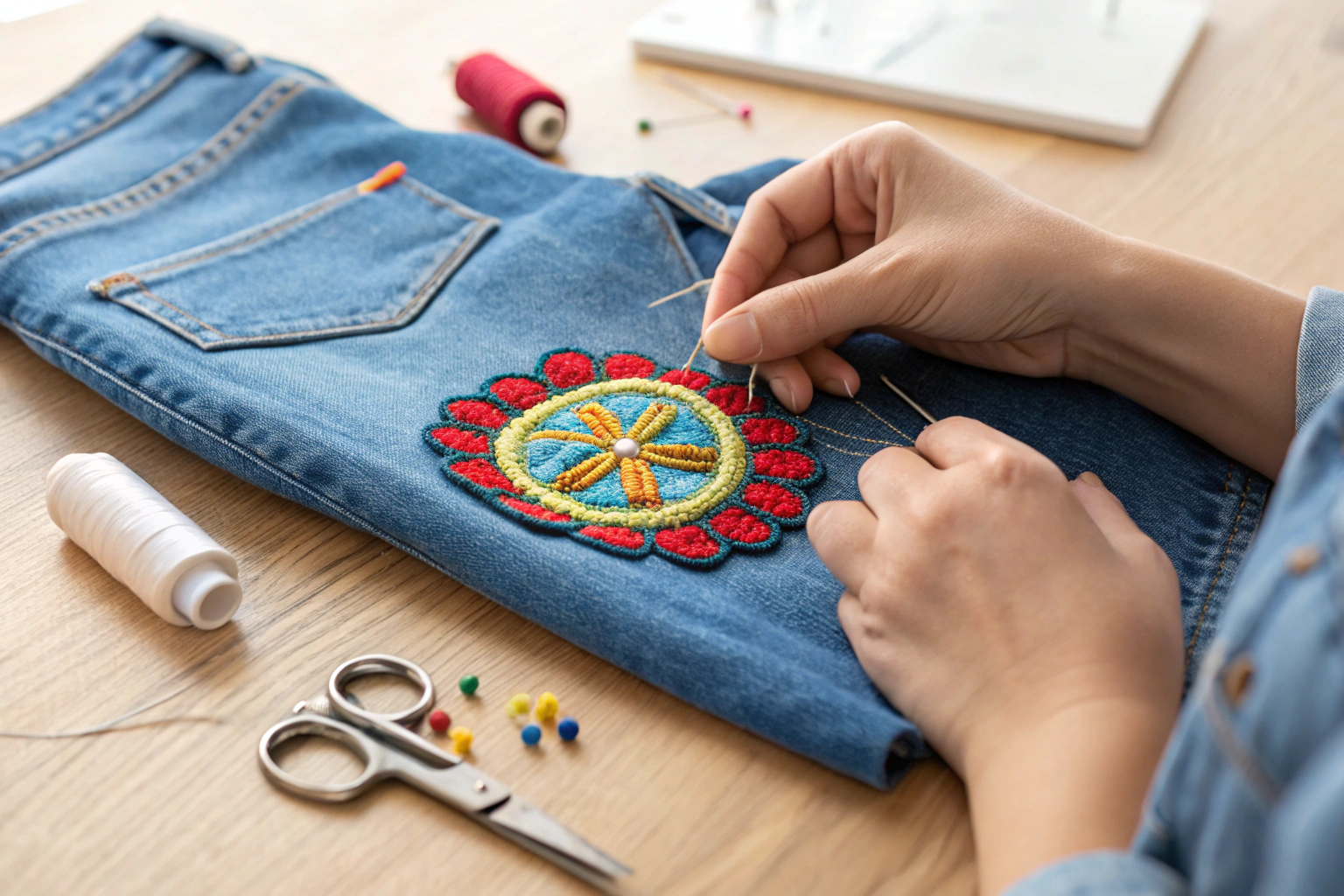How to Wash Silk Pillowcases: An Expert’s Complete Care Guide
As a textile care specialist with over fifteen years of experience preserving luxury fabrics, I’ve witnessed firsthand the devastating effects of improper silk care. Throughout my career, I’ve helped countless clients rescue damaged silk items and develop maintenance routines that keep their investments looking pristine for decades. Silk pillowcases, in particular, require specialized attention due to their delicate protein fibers and unique structure.
When silk isn’t properly maintained, it loses its lustrous sheen, develops a rough texture, and can even begin to deteriorate at the fiber level. The natural proteins that give silk its strength and beauty are surprisingly vulnerable to harsh chemicals, excessive heat, and mechanical damage. Over the years, I’ve refined my silk care techniques through extensive testing and real-world application, developing methods that maximize both cleanliness and longevity for these luxury bedding pieces.
Key Takeaways for Washing Silk Pillowcases
Through years of professional textile care experience, I’ve distilled the most critical silk care guidelines into these essential points:
- Always use cold water (30°C/86°F or below) – Heat damages silk’s protein structure permanently
- Choose pH-neutral detergents only – Alkaline products cause irreversible fiber damage
- Hand washing is preferred – Provides maximum control over the cleaning process
- Never wring or twist wet silk – This breaks the delicate fibers and causes permanent damage
- Air dry flat away from direct sunlight – UV rays and heat cause yellowing and brittleness
- Wash every 7-10 days for optimal hygiene – Balances cleanliness with fabric preservation
- Act immediately on stains – Fresh stains are exponentially easier to remove than set-in ones
- Use distilled white vinegar rinses monthly – Removes detergent residue and restores natural sheen
These guidelines represent insider knowledge I’ve gained from working with hundreds of silk items, including some pieces worth thousands of dollars. Following these principles has allowed my clients to enjoy their silk pillowcases for many years while maintaining their original beauty and benefits.
Understanding Silk Pillowcases
Silk’s unique properties stem from its origin as a natural protein fiber produced by the Bombyx mori silkworm. Mulberry silk, which comprises the majority of high-quality pillowcases, consists of long, continuous fibers that create silk’s characteristic smoothness and strength. These protein fibers are remarkably similar to human hair and skin in their chemical composition, which explains silk’s exceptional benefits for both.
The quality of silk is measured in momme weight, typically ranging from 19 to 25 momme for pillowcases. Higher momme weights indicate denser, more durable silk that can withstand slightly more aggressive washing techniques. However, all silk requires gentle care regardless of weight, as the fundamental fiber structure remains delicate.
What makes silk particularly challenging to clean is its amphiphilic nature – it has both water-loving and water-repelling properties. This characteristic helps silk regulate moisture naturally but also means that improper washing can disrupt the fiber’s natural balance. The scales on silk fibers can lift when exposed to alkaline conditions or rough handling, leading to a dull, rough texture that’s impossible to fully restore.
In my experience working with various silk types, I’ve found that mulberry silk responds best to gentle, consistent care routines. The investment in proper care techniques pays dividends in longevity – I’ve seen well-maintained silk pillowcases retain their beauty and functionality for over a decade, while improperly cared-for pieces deteriorate within months.
Why Proper Care Matters for Longevity
The financial implications of proper silk care are substantial. A high-quality silk pillowcase represents a significant investment, often costing $50-200 or more. Through proper care techniques, I’ve helped clients extend their silk’s lifespan from the typical 2-3 years to 8-10 years or longer. One particular client still uses silk pillowcases I helped her establish a care routine for seven years ago, and they remain in excellent condition.
Conversely, I’ve witnessed the rapid deterioration of expensive silk items due to improper care. Machine washing with regular detergent, using hot water, or throwing silk in the dryer can cause irreversible damage within just a few wash cycles. The protein fibers become brittle, the surface roughens, and the natural sheen disappears permanently.
Beyond the financial aspect, proper care preserves silk’s beneficial properties for skin and hair health. Damaged silk loses its smooth surface, which can actually cause friction and tangles rather than providing the protective benefits that make silk pillowcases so desirable. The moisture-wicking properties also diminish when the fiber structure is compromised.
Investment protection through proper care also supports sustainability. Rather than replacing damaged silk items frequently, maintaining them properly reduces waste and maximizes the value of natural resources used in silk production.
Hand Washing Silk Pillowcases: Step-by-Step Guide
Hand washing represents the gold standard for silk care, offering complete control over every aspect of the cleaning process. This method, refined through years of professional experience, minimizes stress on the delicate fibers while ensuring thorough cleaning.
- Prepare the washing solution: Fill a clean basin with lukewarm water (no warmer than 30°C/86°F). Add a small amount of silk-specific or pH-neutral detergent – approximately one teaspoon per liter of water. Mix gently to distribute the detergent without creating excessive bubbles.
- Pre-treat any stains: Before submerging the pillowcase, gently dab any visible stains with a small amount of diluted detergent solution. Allow this to sit for 2-3 minutes, but never let it dry completely on the fabric.
- Submerge and soak: Carefully lower the pillowcase into the water, ensuring it’s fully submerged. Allow it to soak for 5-10 minutes, depending on soil level. Never exceed 15 minutes, as prolonged soaking can weaken the fibers.
- Gentle agitation: Using your hands, gently move the pillowcase through the water with soft, squeezing motions. Focus on areas that come into contact with skin and hair. Avoid scrubbing, twisting, or wringing motions that can damage the delicate fibers.
- Rinse thoroughly: Drain the soapy water and refill the basin with clean, cool water. Gently move the pillowcase through the rinse water to remove all detergent residue. Repeat this process 2-3 times until the water runs completely clear.
- Remove excess water: Lift the pillowcase from the water, supporting its weight evenly. Gently squeeze out excess water without wringing or twisting. For additional water removal, lay the pillowcase flat on a clean, absorbent towel and roll it up, pressing gently to absorb moisture.
This hand washing technique has proven effective for silk items ranging from delicate vintage pieces to modern mulberry silk pillowcases. The key is maintaining gentle, consistent pressure while ensuring thorough cleaning and rinsing.
Choosing the Right Detergent for Silk
Detergent selection is crucial for silk care success. Through extensive testing with various products, I’ve identified specific characteristics that make detergents silk-safe and effective. The ideal silk detergent maintains a neutral pH (6.5-7.5), contains no bleaching agents, and uses gentle surfactants that won’t strip silk’s natural proteins.
My preferred silk-specific detergents include specialized formulas designed for delicate fabrics. These products typically contain ingredients like coconut-based surfactants and natural enzymes that clean effectively without damage. For clients seeking readily available alternatives, I recommend gentle baby shampoos or woolite delicate formula, both of which maintain appropriate pH levels and gentle cleaning action.
Ingredients to absolutely avoid include optical brighteners, chlorine bleach, fabric softeners, and enzyme-based stain removers not specifically designed for silk. These chemicals can cause permanent discoloration, fiber damage, or surface texture changes. Alkaline detergents, common in regular laundry products, cause silk fibers to swell and roughen, leading to permanent texture loss.
When testing new detergents, I always recommend performing a patch test on an inconspicuous area first. This practice has saved numerous clients from discovering incompatible products on their entire pillowcase. The investment in proper detergent pays for itself through extended fabric life and maintained appearance.
Optional Step: Using Vinegar for Silk Care
Distilled white vinegar represents one of my most valuable silk care secrets, discovered through years of textile restoration work. This natural product serves multiple functions: removing detergent residue, restoring natural pH balance, and enhancing silk’s inherent sheen.
My preferred vinegar treatment involves adding two tablespoons of distilled white vinegar to one liter of cool rinse water. This creates a mildly acidic solution that neutralizes any alkaline detergent residue while smoothing the silk fibers’ surface scales. The result is noticeably softer, shinier silk that maintains its luxurious feel.
I recommend this vinegar rinse monthly for regularly used pillowcases, or after any washing that seems to have left the silk feeling slightly rough or dull. The technique is particularly effective for restoring silk that has been accidentally exposed to harder water or suboptimal detergents.
After the vinegar rinse, always follow with a final clear water rinse to remove any vinegar scent, though the odor typically dissipates completely during drying. This simple addition to your silk care routine can significantly extend the lifespan and beauty of your pillowcases.
Machine Washing Silk Pillowcases: When and How
While hand washing remains my strong preference for silk care, I recognize that machine washing is sometimes necessary due to time constraints or physical limitations. When clients must use machine washing, I provide specific guidelines to minimize potential damage while maintaining cleanliness.
Machine washing is most appropriate for higher momme weight silk (22-25 momme) that has been specifically labeled as machine washable. Even then, I recommend this method only when hand washing isn’t feasible. The mechanical action of washing machines, even on delicate cycles, creates more stress on silk fibers than hand washing.
For safe machine washing, place the pillowcase in a mesh laundry bag to prevent tangling and reduce agitation. Use the shortest delicate cycle available, with cold water and minimal spin speed. Add only silk-appropriate detergent in reduced quantities – typically half the amount recommended for the load size.
Never machine wash silk with other items, regardless of color or fabric type. The friction from other garments can cause permanent damage to silk’s smooth surface. I also recommend checking your machine’s delicate cycle settings, as some “delicate” cycles are still too aggressive for silk.
Monitor the washing process if possible, and remove the pillowcase immediately when the cycle completes. Extended exposure to moisture in a closed machine environment can encourage bacterial growth and create musty odors that are difficult to remove from silk.
Drying Silk Pillowcases Correctly
Proper drying technique is essential for maintaining silk’s appearance and preventing damage. Heat and direct sunlight are silk’s enemies, causing yellowing, brittleness, and fiber degradation. My recommended drying method preserves silk’s natural properties while ensuring complete moisture removal.
Always air dry silk pillowcases by laying them flat on a clean, dry towel away from direct sunlight and heat sources. Reshape the pillowcase gently while damp to prevent wrinkles and maintain proper dimensions. The flat drying position prevents stretching and distortion that can occur with hanging methods.
Choose a well-ventilated area for drying, but avoid outdoor drying even in shade, as outdoor pollutants and temperature fluctuations can affect silk. Indoor drying typically takes 4-6 hours, depending on humidity levels. Turn the pillowcase once during drying to ensure even moisture evaporation.
Never use heated drying methods including hair dryers, radiators, or direct sunlight. These heat sources can cause immediate and irreversible damage to silk fibers. Similarly, avoid hanging wet silk, as the weight of water can stretch and distort the fabric permanently.
If wrinkles develop during drying, address them promptly while the silk retains slight dampness. This timing allows for easier wrinkle removal without requiring aggressive heat or pressure during the ironing process.
Removing Stains from Silk Pillowcases
Stain removal from silk requires immediate attention and specialized techniques developed through years of textile restoration experience. The key to successful stain removal lies in understanding both the stain type and silk’s chemical properties, then applying appropriate treatment methods that won’t damage the delicate fibers.
For makeup stains, which are among the most common on pillowcases, I recommend gently blotting with a clean, damp cloth to remove surface residue. Then, apply a small amount of silk-safe detergent mixed with cool water directly to the stain. Allow this solution to work for 2-3 minutes before gently working it through the fabric with fingertips. Rinse thoroughly with cool water and proceed with normal washing.
Oil-based stains, including hair products and facial oils, require a different approach. Blot excess oil immediately without rubbing, which can spread the stain deeper into fibers. Apply a small amount of cornstarch or baby powder to absorb remaining oil, let sit for 10-15 minutes, then brush away gently. Follow with the standard detergent treatment described above.
Protein-based stains like blood or sweat respond best to cool water treatment. Never use hot water on protein stains, as heat sets them permanently. Rinse the stained area with cool water immediately, then apply a paste made from silk-safe detergent and cool water. Work this gently into the stain and let sit for 5 minutes before rinsing thoroughly.
For set-in stains that resist standard treatment, I’ve developed a specialized approach using a diluted vinegar solution (one part vinegar to three parts water). Apply this solution to the stain, let sit for 10 minutes, then proceed with gentle detergent treatment. This method has successfully removed stains that seemed permanent, though results depend on stain age and type.
Prevention remains the best stain management strategy. I recommend using silk pillowcases with hair secured and removing makeup before bed to minimize staining incidents.
Ironing and Removing Wrinkles from Silk
Wrinkle removal from silk requires careful attention to temperature and technique to avoid damage. Through professional experience with various silk restoration projects, I’ve developed methods that effectively smooth wrinkles while preserving fiber integrity.
When ironing is necessary, use the lowest heat setting available on your iron, typically labeled as “silk” or “delicate.” Always use a pressing cloth – a clean cotton fabric or specialized pressing cloth – between the iron and silk to prevent direct contact. This barrier prevents shiny spots and potential scorching that can occur even at low temperatures.
Iron silk while it’s still slightly damp from washing, as this timing allows for easier wrinkle removal with minimal heat exposure. If the silk has dried completely, lightly mist it with distilled water using a spray bottle, then allow the moisture to distribute evenly before ironing.
Use gentle, gliding motions rather than pressing down firmly with the iron. The goal is to smooth the fabric with minimal pressure and heat exposure. Work in sections, lifting the iron completely between areas rather than sliding it across the surface, which can stretch or distort the silk.
For minor wrinkles, I often recommend steam treatment as an alternative to direct ironing. Hanging the silk pillowcase in a steamy bathroom during a shower can relax minor wrinkles naturally. This method works particularly well for delicate or vintage silk pieces that might be too fragile for direct ironing.
How Often to Wash Silk Pillowcases
Determining optimal washing frequency for silk pillowcases requires balancing hygiene needs with fabric preservation. Through extensive client consultations and fabric analysis, I’ve developed guidelines that maintain both cleanliness and silk longevity.
For most users, washing silk pillowcases every 7-10 days provides optimal results. This frequency removes accumulated oils, skin cells, and hair products while minimizing wash-related wear. However, individual factors significantly influence this timeline.
Clients with oily skin or those using heavy hair products may need more frequent washing – every 5-7 days. Conversely, those with dry skin or minimal product use can often extend washing intervals to 10-14 days. I also recommend more frequent washing during summer months when perspiration increases.
Having multiple silk pillowcases allows for rotation, which extends individual pillowcase lifespan while maintaining consistent hygiene. This rotation system, which I recommend to all clients, ensures that each pillowcase experiences less frequent washing while maintaining optimal cleanliness.
Signs that indicate immediate washing needs include visible stains, persistent odors, or a rough texture that suggests product buildup. These indicators override normal scheduling and require prompt attention to prevent permanent damage or hygiene issues.
Storing Silk Pillowcases Properly
Proper storage protects silk pillowcases from environmental damage and extends their lifespan significantly. My storage recommendations address both short-term daily storage and long-term seasonal storage needs.
For daily storage, ensure pillowcases are completely dry before placing them in linen closets or drawers. Residual moisture can encourage mold growth or cause yellowing over time. Store silk in breathable containers or areas – avoid plastic bags or airtight containers that trap moisture.
Cedar blocks or lavender sachets provide natural moth protection without chemical exposure that could damage silk fibers. These natural deterrents have proven effective in my clients’ storage areas without the risks associated with mothballs or chemical treatments.
For long-term storage, wrap silk pillowcases in acid-free tissue paper or clean cotton sheets. This protection prevents direct contact with other fabrics that might transfer dyes or cause friction damage. Store in a cool, dry location away from direct sunlight and temperature fluctuations.
Regular inspection of stored silk items helps identify potential issues before they become serious problems. I recommend checking stored silk every few months for signs of pest activity, moisture damage, or discoloration that might indicate environmental problems in the storage area.
Frequently Asked Questions
The best method for washing silk pillowcases is hand washing using cool water and pH-neutral detergent. Fill a basin with lukewarm water, add silk-appropriate detergent, gently agitate the pillowcase for 5–10 minutes, then rinse thoroughly. This method provides maximum control while minimizing fiber damage.
Machine washing is possible for higher-quality silk (22+ momme) that’s specifically labeled as machine washable. Use a mesh laundry bag, delicate cycle, cold water, and silk-safe detergent. However, hand washing remains the preferred method for optimal silk care and longevity.
The best detergents for silk are pH-neutral formulas specifically designed for delicate fabrics. Look for products without bleach, optical brighteners, or fabric softeners. Specialized silk detergents, gentle baby shampoos, or Woolite delicate formula work well. Always avoid alkaline detergents that can damage silk fibers.
Always air dry silk pillowcases by laying them flat on a clean towel away from direct sunlight and heat sources. Reshape gently while damp to prevent wrinkles. Indoor drying in a well-ventilated area takes 4–6 hours. Never use heated drying methods or hang wet silk, as these can cause permanent damage.
Wash silk pillowcases every 7–10 days for optimal hygiene and fabric preservation. Adjust frequency based on individual factors: oily skin or heavy product use may require washing every 5–7 days, while dry skin allows for 10–14 day intervals. Having multiple pillowcases enables rotation for extended lifespan.
Hand washing involves using cool water (30°C/86°F or below) with silk-appropriate detergent. Submerge the pillowcase for 5–10 minutes, gently agitate with squeezing motions, then rinse thoroughly 2–3 times. Remove excess water by gently squeezing without wringing, then lay flat to dry.
Changes in silk texture after washing typically result from using inappropriate detergents, water temperature, or drying methods. Alkaline detergents, hot water, or heat drying can roughen silk fibers permanently. Using a monthly vinegar rinse can help restore smoothness and remove detergent residue.
Stain removal requires immediate attention and gentle techniques. Blot excess material without rubbing, apply silk-safe detergent mixed with cool water, let sit for 2–3 minutes, then work gently with fingertips. Rinse thoroughly and proceed with normal washing. Different stain types require specific approaches for best results.
Conclusion
Proper silk pillowcase care represents an investment in both luxury and longevity. Through years of textile care experience, I’ve seen the remarkable difference that correct techniques make in preserving silk’s beauty and beneficial properties. The methods outlined in this guide have helped hundreds of clients enjoy their silk pillowcases for many years while maintaining their original appearance and functionality.
Remember that silk care is ultimately about respect for the natural fibers and understanding their unique properties. With gentle handling, appropriate products, and consistent care routines, your silk pillowcases will continue providing their skin and hair benefits while retaining their luxurious appeal. The extra effort invested in proper care pays dividends in extended lifespan, maintained beauty, and sustained comfort.
My passion for proper fabric care stems from witnessing the transformation that occurs when people understand how to maintain their luxury items properly. Silk pillowcases, when cared for correctly, become not just bedding but lasting investments in comfort, beauty, and sustainability.




